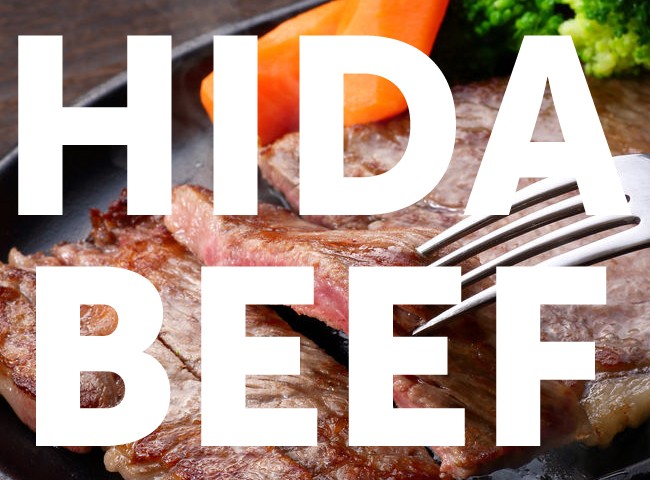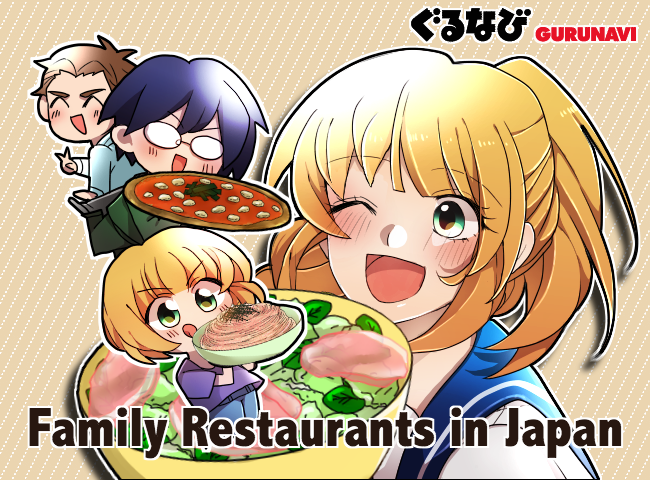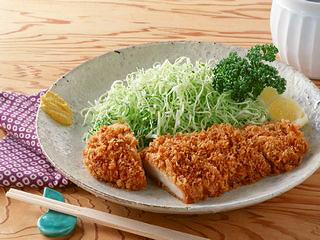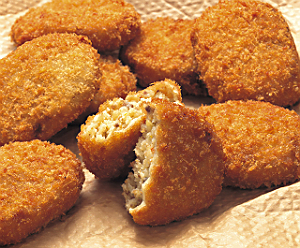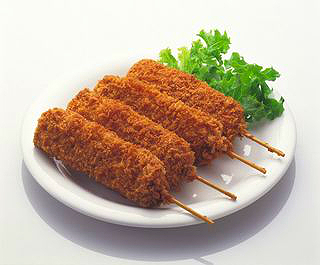Battle of the Best Japanese Fried Food

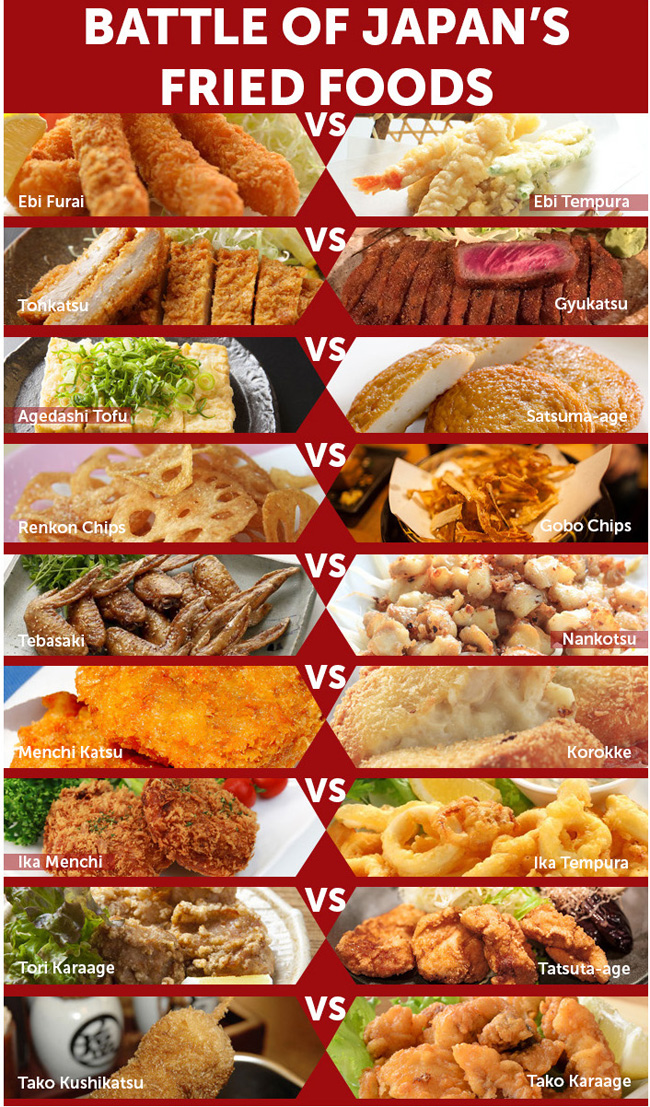
So you thought Japanese cuisine is all light tasting, delicate and healthy? Think again! Fried foods, or agemono, are a common part of Japanese diet and food culture. And, characteristic of Japanese cuisine, the cooking process of these fried foods is refined to a subtle art, resulting in crispy and golden, yet surprisingly less greasy versions of their Western counterparts.
Fried food was not always a part of the Japanese food culture, which traditionally revolved around tofu, vegetables and fish eaten pickled or raw, steamed, boiled, or dried. The first Japanese fried food is commonly recognized as being tempura, which was introduced by the Portuguese missionaries in 16th century. Gradually, other frying techniques became popular, and now fried foods are an essential part of the Japanese diet. From your quick bento lunchbox to elegant kaiseki meal or the hot food shelf at a convenience store–you’re bound to encounter an array of Japanese Fried Foods. So here’s a showdown of the biggest agemono in town.
Appetite for Agemono: Finding Your Favourite Fried Japanese Food
Ebi Furai vs Tempura Ebi
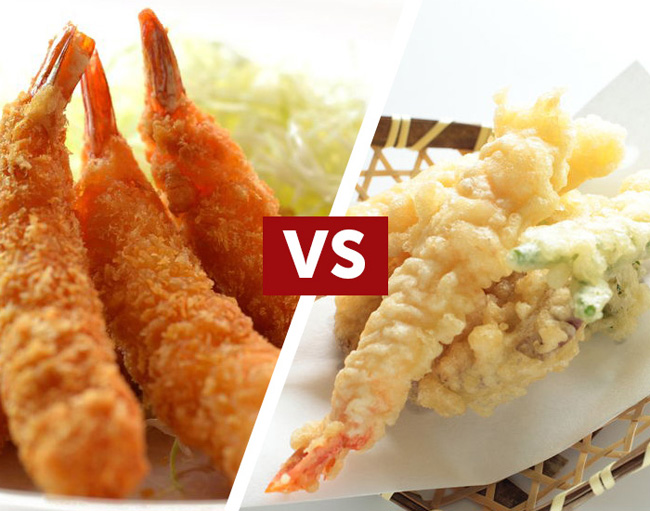
The main difference between the ebi furai and tempura ebi is the coating, which leads to a different taste and tactile experience. Ebi furai is dusted with flour, dipped into a beaten egg mixture, then finally coated in breadcrumbs and deep-fried to form a crunchy, golden brown shell. Tempura is a light batter is made made from cold water and flour, and ingredients are dipped in the batter then deep-fried. Tempura prawns come in a delicate light yellow-gold colour, and the coating is usually thinner than that of its breadcrumbed brethren. Where ebi furai will come with a Worcestershire-like sauce, tempura ebi will come with a soy-based dipping sauce or simply salt.
Tonkatsu vs Gyukatsu
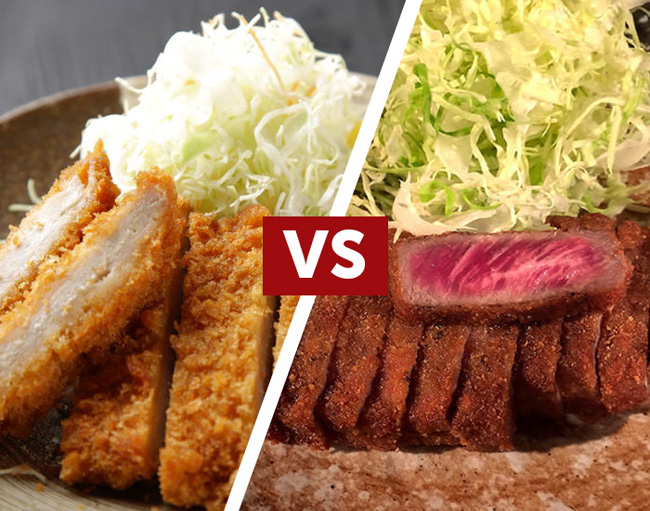
Gyukatsu–crumbed and fried beef cutlets–are a relatively new kid on the block, as “katsu” come most commonly in pork form, as “tonkatsu”. Both tonkatsu and gyukatsu are covered in a breadcrumb coating and deep-fried, but where the tonkatsu meat is cooked thoroughly, the gyukatsu is crisp on the outside but left rare on the inside–just as you would find in a medium-rare steak. This cooking method appeals to the Japanese love for a variety of textures in their food, with the soft and juicy texture of rare beef contrasting with a crispy coating. If you prefer, you can cook the meat to your preference at one of the cook-your-own interactive experiences offered by gyukatsu restaurants, but not by tonkatsu. Condiments also differ between the two–where tonkatsu comes with a Worcestershire-like sauce or Japanese mustard, its beefy cousin is usually eaten with wasabi, rock salt and soy sauce.
Agedashi Tofu vs Satsuma-age

While both the agedashi tofu and satsuma-age may look deceptively similar, they are two very different deep-fried dishes. Agedashi tofu is made from tofu that has been coated in a thin layer of cornstarch and deep-fried to create a crispy, chewy texture on the outside and soft inside, while the satsuma-age is a patty of minced fish and flour that has been pounded into a paste, shaped and then fried. Various other ingredients can be combined in the satsuma-age, such as vegetables and octopus, while the agedashi tofu is kept plain, and served in a simple dashi broth.
Tebasaki vs Nankotsu
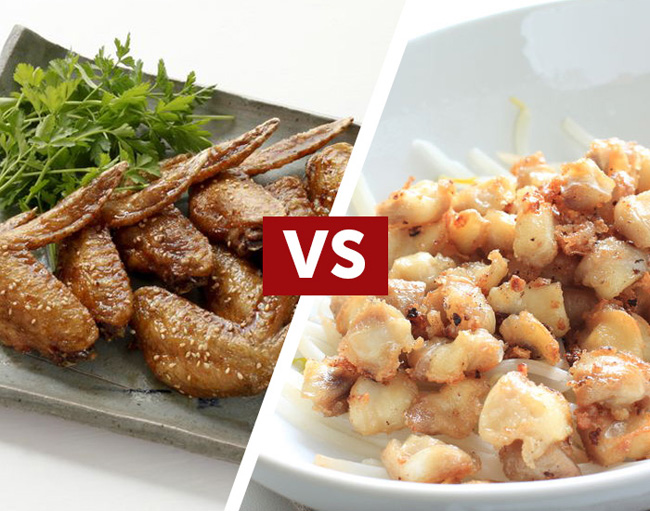
It would be hard to find someone who doesn’t like fried chicken wings, and the Japanese are no different. Tebasaki refer to fried chicken wings, and these are cooked in a variety of flavors depending on the region, from simple salt and pepper to a mix of spices and sauces. Nankotsu is a dish of fried chicken cartilage, which is popular for its crunchy texture. Nankotsu is usually fried in a batter and flavored with some salt and pepper, with less variety of flavors than the chicken wing.
Tori Karaage vs Tatsuta-age
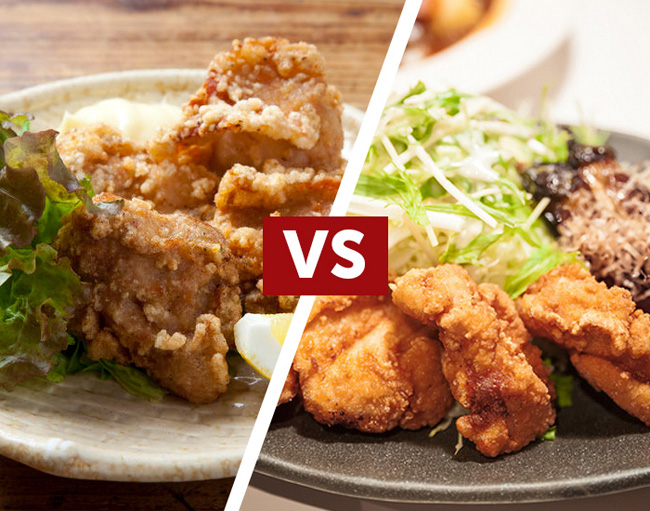
It may be hard at first glance to tell the difference between these two Japanese fried food types, but the differences come from the coating and condiments use for these deep-fried chicken dishes. Tatsuta-age is powdered with only potato starch, and hence has a thinner coating, while the tori karaage is also dipped in wheat flour for a deeper colour when fried. And where karaage is often most eaten with a squeeze of lemon, tatsuta-age is served with a dab of karashi (Japanese mustard).
Tako Kushikatsu vs Tako Karaage
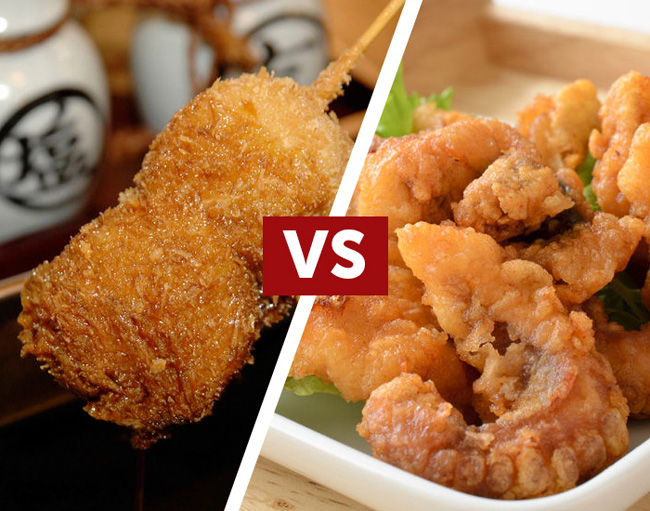
In the Kansai city of Osaka, the ever-practical and ever-food obsessed locals decided it would be faster to fry rather than grill their skewered food, so “kushiage” (fried sticks) were born. Aside from the main difference of tako (octopus) kushikatsu being served on a stick and tako karaage consisting of chopped bits of octopus, is the coating. Where tako kushikatsu is covered in breadcrumbs for a crunchier texture that is designed to soak up as much Worcestershire dipping sauce as possible, the tako in a flour batter and served with mayonnaise for extra creaminess.
Menchi Katsu vs Korokke
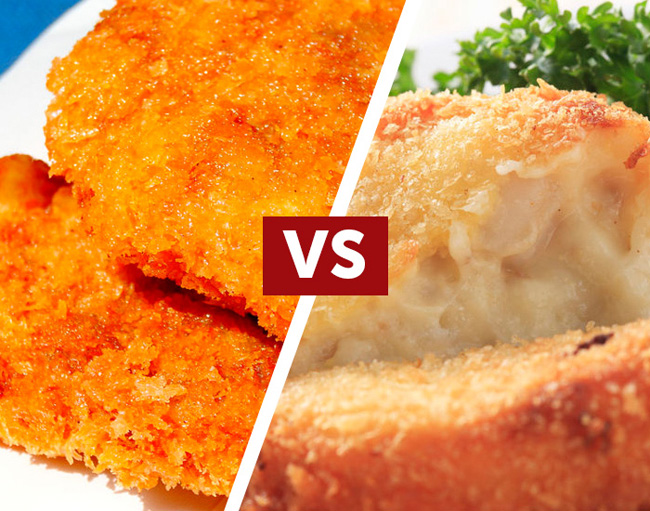
Menchi is the Japanese term for mince, and a menchi katsu is refers to a mince patty–either pork or beef or a combination–inside a fried breadcrumb coating. Korokke is a derivative of the French original, a potato-based “croquette”. Korokke in Japan is also mainly potato-based, and includes small bits of beef, pork, cheese and other ingredients in the mixture, before being crumbed and deep fried. It’s one of the most popular Japanese fried foods at convenience stores, street food stands and izakayas. Both are commonly eaten with Worcestershire sauce or karashi.
Ika Menchi vs Ika Tempura
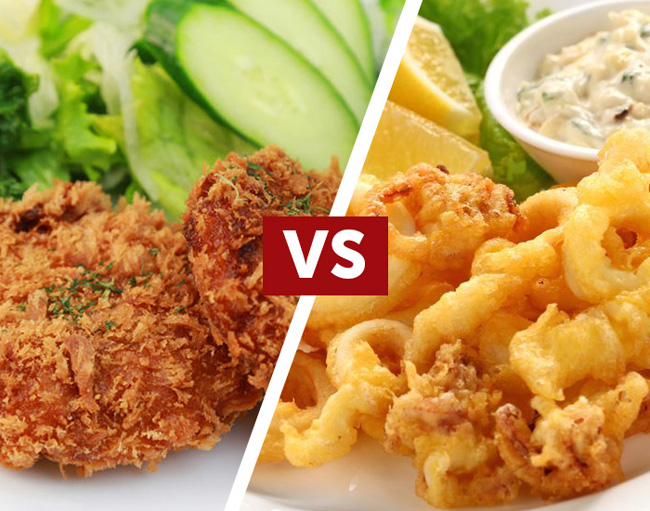
Ika menchi is a close cousin of the satsuma-age, as it is made of fried fish paste with bits of squid inside it for added chewiness and taste. Ika tempura on the other hand, tempura-battered and deep-fried cuts of the squid. Ika tempura is served with salt or tsuyu (a light soy dipping sauce). The ika menchi is usually eaten on its own or with soy sauce, wasabi or Japanese mustard for a bit of heat.
Renkon Chips vs Gobo Chips
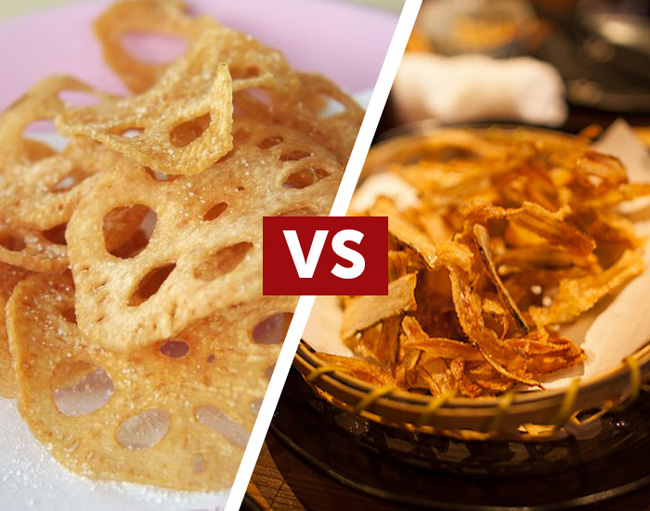
Why stop at the potato chip when you can fry so many other root vegetables? Renkon chips are thinly-sliced and deep-fried pieces of lotus root, and gobo chips are sliced or shaved pieces and deep-fried pieces of gobo (burdock root). While the lotus root has a light, slightly sweet and ease-to-please taste, the gobo, or burdock, has a distinctly earthy flavor.
Whether It’s Tempura, Tonkatsu, Karaage or Korokke, There’s a Japanese Fried Food for All Tastes
As you can see, a wide variety of foods from root vegetables to two-legged mammals and eight-legged cephalopods are on the agemono menu in Japan. And because fried foods go so well an ice-cold glass of beer, why not try this classic combination during your time in Japan.




